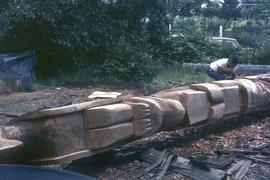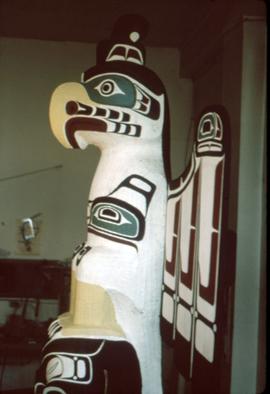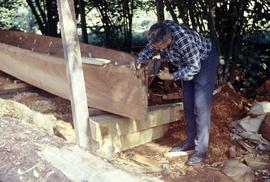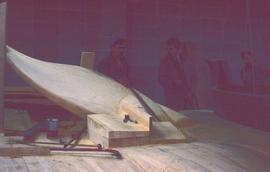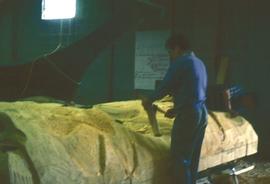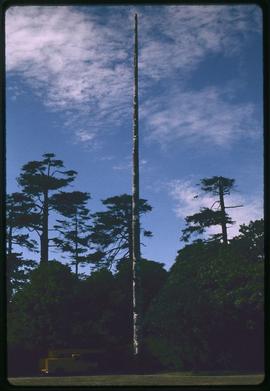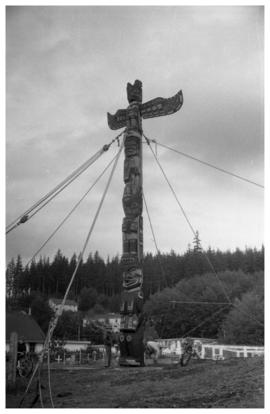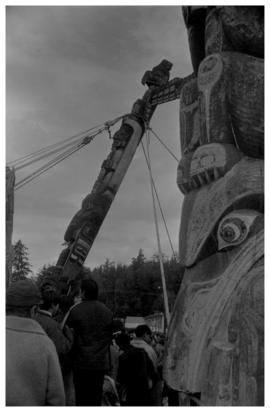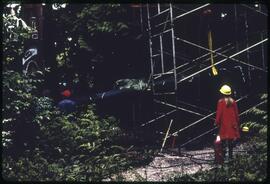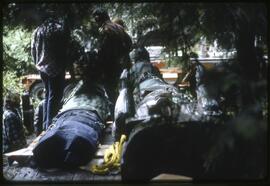- 92-1-a034539
- Item
- [ca. 1964 - 1967]
Parte de Virginia Kehoe fonds
Image depicts a carver, possibly Godfrey Hunt, working on a partially carved totem pole. Depicted images include a Thunderbird and a figure holding a copper. This may be the St. Catherines. Ontario Centennial Confederation pole, carved in 1967.

